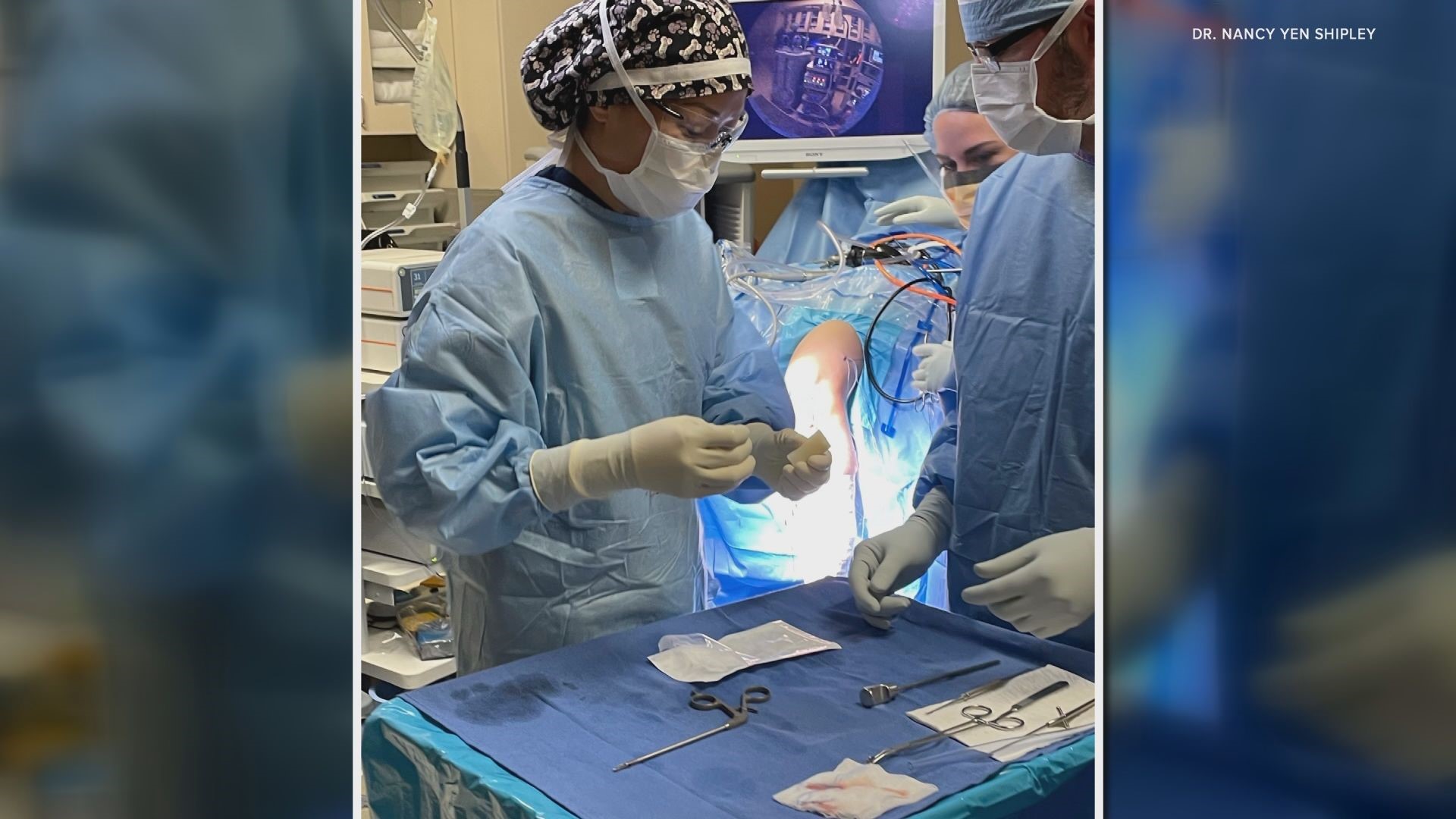PORTLAND, Ore. — For those who ski, snowboard or play soccer, the threat of a debilitating ACL injury can be all too real. It's a common injury and every year, hundreds of thousands of people damage or tear this particular ligament.
Olivia Mol said she knew this, but didn't think it would happen to her, given a lack of injuries throughout her life as an avid skiier.
"Not that I thought that I was invincible, but I just didn't think I would put myself in a position where I would do something like this," said Mol.
In April while skiing at Mt. Hood, Mol went over a small jump and landed funny.
"I noticed that I couldn’t put any weight on my knee… Anytime I would try to carve, it would just give out and I would kind of collapse," she said.
RELATED: Portland doctors 'first in the world' to apply new cancer therapy, resulting in tumor reduction
Ski patrol came over to take a look and Mol and asked her what happened. When she took off her snow pants, Mol said her knee was the size of a football.
"That was kind of like the moment I think it hit me," she said. "I was like, 'Oh my god, this dreaded injury that I’ve heard about my whole life, this daunting abstract thing has finally happened to me.'"
That's where Dr. Nancy Yen Shipley came in. Yen Shipley is an orthopedic surgeon who has practiced in Portland for almost 11 years. Last week, she performed a new type of ACL surgery.
"It's one of the first of a handful here in Oregon," she said. "It's called the BEAR procedure. Basically, it's a bridge enhanced ACL repair."
Yen Shipley said for the last 30 years, surgeons have been treating ACL injuries with reconstructions, meaning they take tissue from somewhere else to reconstruct the ACL. This new procedure changes the game.
"This procedure is unique in that we are now taking the person‘s own ACL — what’s left of it — suturing that and doing a repair by attaching that to a collagen graft and the patient’s own blood to help act as a bridge, to help the ACL heal itself back to its footprint on the bone."
Over time, the implant is absorbed and replaced with native cells and the torn ends of the ACL heal back together.
"The belief is that when you do that, you are going to have a knee that functions a lot more after it heals, like the original knee with the ACL intact," said Yen Shipley.
She gave advice for those facing a similar situation: Don't wait to get your knee checked out.
"For this bridge enhanced repair to occur, the person has to have the surgery within 50 days of the injury. There is a bit of a ticking clock after the injury occurs," she said.

